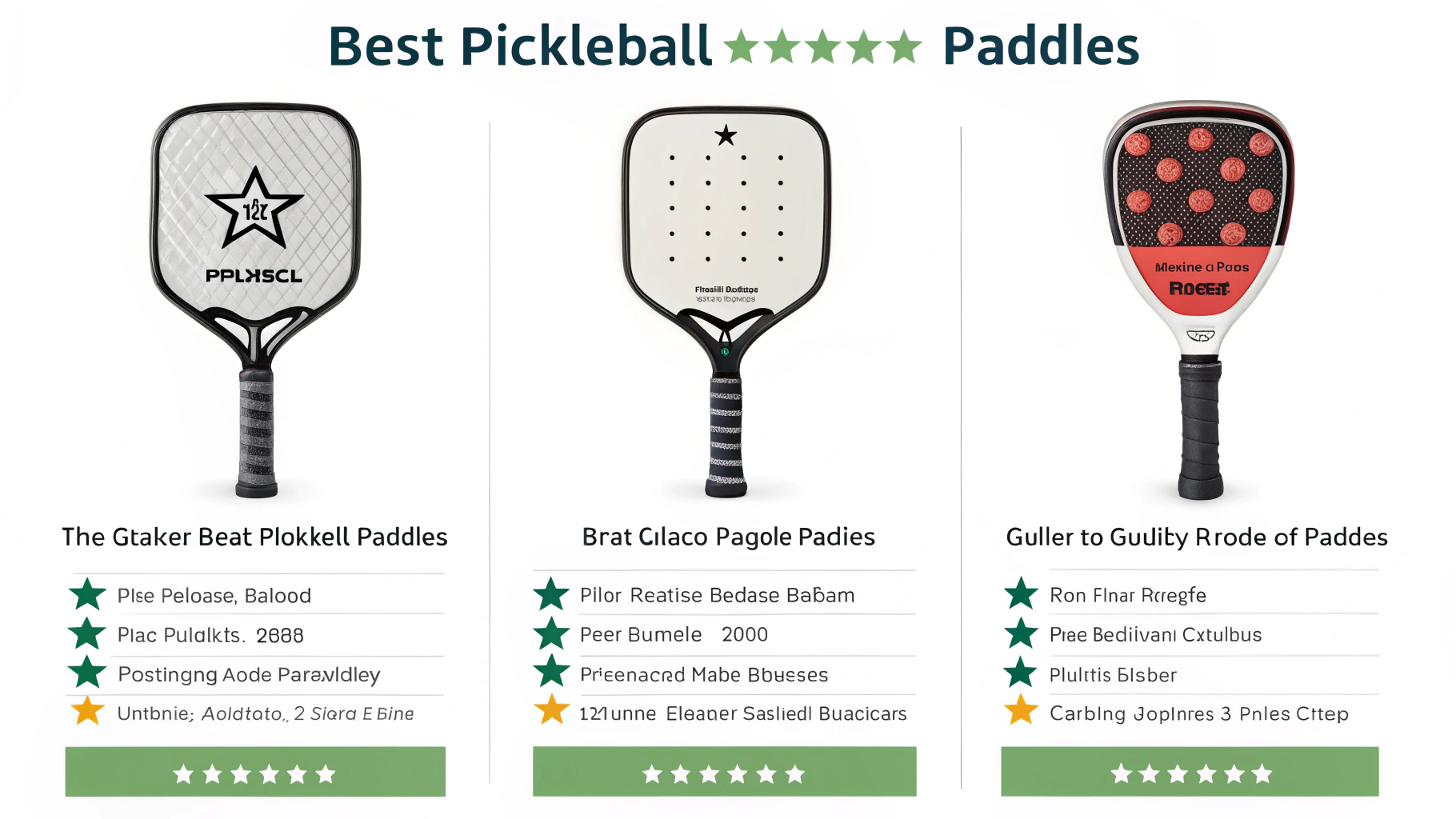Pickleball is a sport that is growing rapidly in popularity across the globe, combining elements from badminton, tennis, and table tennis. At the heart of playing pickleball effectively lies the importance of choosing the right paddle. This guide explores the many facets of pickleball paddles—from their historical context and appropriate specifications to practical considerations and tips for selection and use. Whether you’re a beginner or a seasoned player, understanding these elements can enhance your game and ensure you own the equipment best suited to your style and needs.
Introduction
The origin of pickleball dates back to 1965, when it was invented by Joel Pritchard, Bill Bell, and Barney McCallum on Bainbridge Island, Washington. What started as a children's backyard pastime has grown into a competitive sport enjoyed worldwide. The specifications and standards for pickleball paddles are significant because they ensure fair play, safety, and consistency across various play levels. The official governing body, USA Pickleball, provides regulations and guidelines for paddle dimensions, surface roughness, and marking to maintain the integrity of the sport.
Standard Measurements & Specifications
| Measurement | Metric | Imperial | Description |
|---|---|---|---|
| Length | up to 50.8 cm | up to 20 inches | Includes handle and paddle face |
| Width | up to 24.13 cm | up to 9.5 inches | Measured at the widest point of the paddle face |
| Thickness | Varies | Varies | Impacts weight and balance; no official guidelines |
| Total Surface Area (max) | 24.13 cm x 50.8 cm | 9.5 inches x 20 inches | Combines length and width; cannot exceed specified values |
Variations in paddle specifications exist based on playing level: professional paddles adhere strictly to maximum size limits, while amateur and youth paddles might be smaller and lighter to accommodate different skill levels and strength capabilities.
Understanding Key Components
- Grip: The handle of the paddle, which affects control and comfort. It should be made of sweat-absorbent material and fit well in the player's hand.
- Face: The playing surface of the paddle. It should be flat and may have a variety of textures that affect ball impact.
- Core: Usually made of composite materials like polymer, Nomex, or aluminum, which determines the paddle's weight and power.
- Edge Guard: Protects the paddle edges. It is often a thin band around the perimeter that absorbs impact.
- Markings: Must adhere to regulations; the surface cannot have any delamination or alterations that could affect gameplay.
Different Variations
Pickleball paddle specifications can vary internationally, with some regions having different tolerance levels for size and material. For example, the International Federation of Pickleball oversees global play and may have slight variations from USA Pickleball. Regional differences can also dictate materials depending on local availability or climate conditions.
- Competition vs. Recreational: Competitive paddles are made to stricter standards and can include advanced materials for enhanced performance, whereas recreational paddles are often more forgiving and cost-effective.
- Age-group Modifications: Youth paddles are typically lighter and smaller to match children's developing skills and size.
Practical Considerations
When setting up a pickleball court, there are specific practical considerations to keep in mind:
- Space Requirements: A full court requires a space of approximately 13.41m x 6.10m (44 feet x 20 feet) with additional room around the perimeter.
- Setup Guidelines: Ensure the net is 0.91 meters (36 inches) high at the sidelines and 0.86 meters (34 inches) at the center.
- Maintenance Tips: Regularly inspect paddles for cracks or surface deterioration and clean them with a damp cloth.
- Common Mistakes to Avoid: Overlooking paddle weight and grip size, which can affect control and comfort.
Selection Guide
When choosing a pickleball paddle, several factors should be considered:
- Skill Level: Beginners might opt for composite paddles for better control, while advanced players may choose those offering more power.
- Budget: Prices can range greatly, from affordable entry-level paddles to high-end models; decide what features are important to you and budget accordingly.
- Brands: Popular brands include Selkirk, ProLite, and Paddletek, each offering models tailored to various playing styles and budgets.
| Feature | Beginner | Intermediate | Advanced |
|---|---|---|---|
| Material | Composite | Graphite/Carbon Fiber | Advanced Graphite/Carbon Fiber |
| Weight | Light (170-210g; 6-7.4 oz) | Medium (210-230g; 7.4-8.1 oz) | Varied (depending on preference) |
| Cost | $30-$50 | $50-$150 | $150 and up |
FAQs
- What is the legal size for a pickleball paddle? The combined width and length, including any edge guard, shall not exceed 61 cm (24 inches).
- Can I use any material for my paddle? Paddles must adhere to regulations regarding acceptable materials such as wood, composite, or graphite.
- Why does paddle weight matter? Lighter paddles offer more control, while heavier ones provide more power and drive.
- What grip size should I choose? Grip sizes should fit comfortably in your hand and can vary; typically available in 10-13 cm (4-5 inches).
- Do professional players use different paddles? Yes, they often use custom paddles with advanced materials for greater performance.
Tips and Best Practices
- Professional Recommendations: Choose a paddle that complements your play style; test various options whenever possible.
- Safety Considerations: Always inspect your gear for damage and ensure the environment is optimal for play to prevent injuries.
- Optimization Suggestions: Modify grips or add overgrips to better suit your hand size and improve control.
- Expert Insights: Attend clinics or workshops to gain insights into effective play and gear management.
In conclusion, choosing and maintaining the right pickleball paddle is crucial for enjoyment and success in the game. Understanding the importance of specifications, materials, and personal preferences ensures you play at your best while complying with official regulations. Through careful selection and correct usage, players can enhance their skills and prolong their equipment’s lifespan, contributing to a more rewarding pickleball experience.











 浙公网安备
33010002000092号
浙公网安备
33010002000092号 浙B2-20120091-4
浙B2-20120091-4